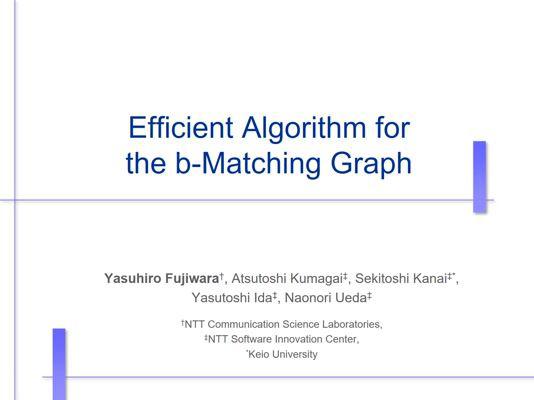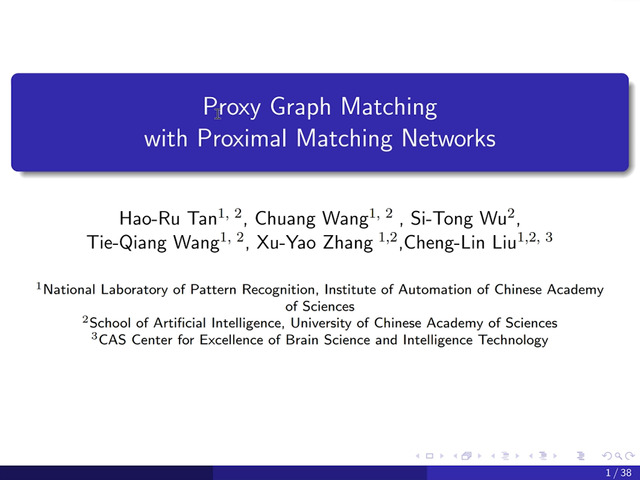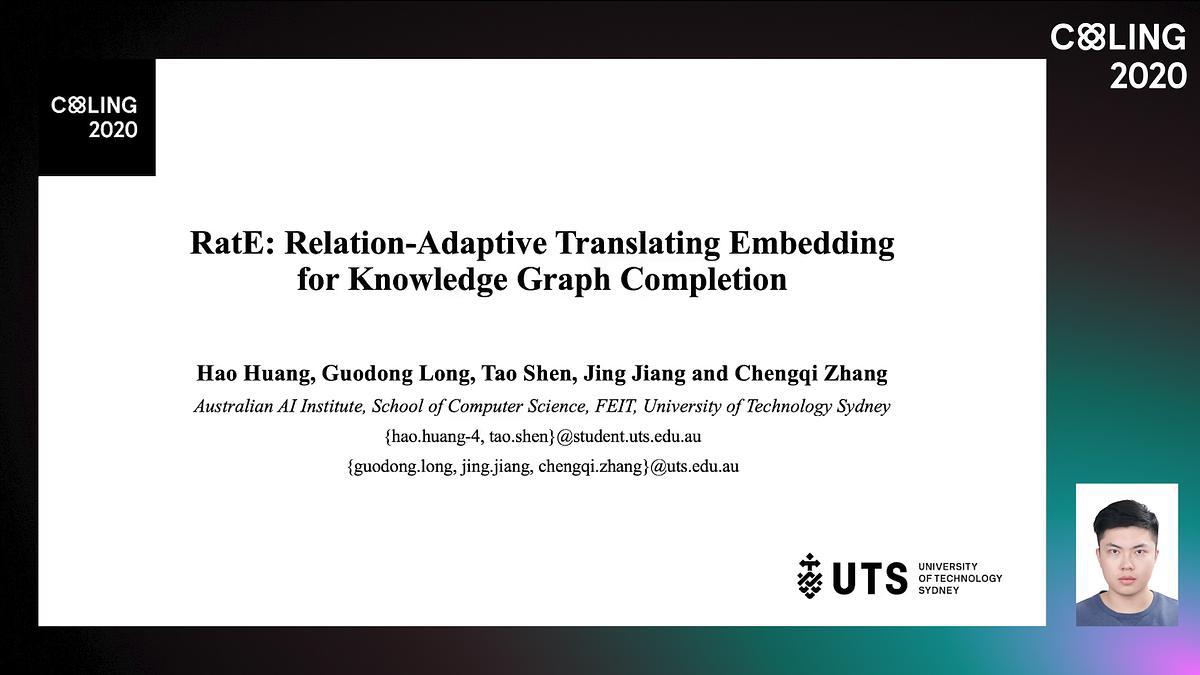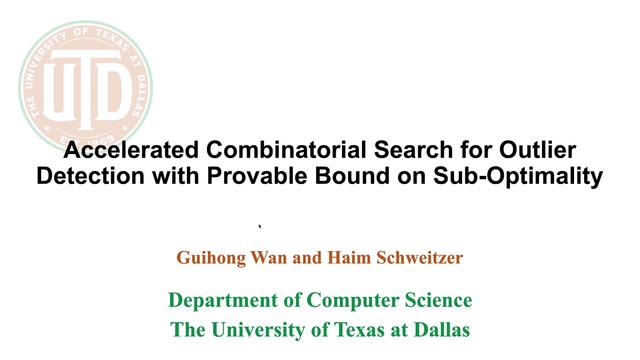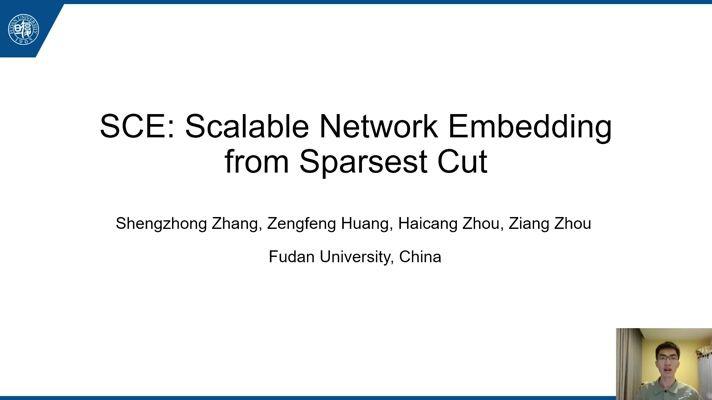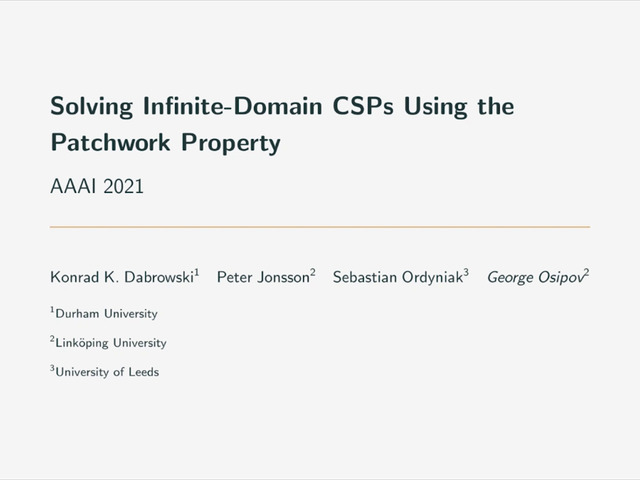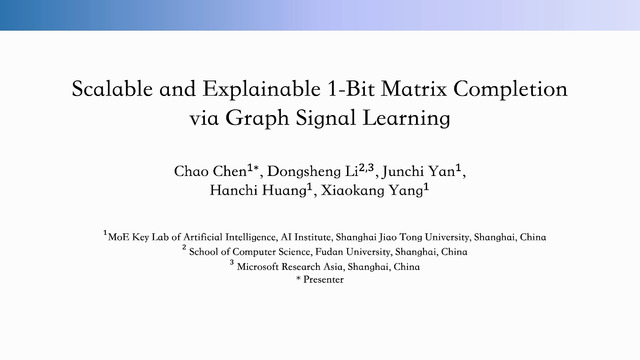Abstract:
The b-matching graph is a useful approach to computing a graph from high-dimensional data. Unlike the k-NN graph that greedily connects each data point to its k nearest neighbors and typically has more than k edges, each data point in the b-matching graph uniformly has b edges; the idea is reduce edges between cross-clusters that have different semantics. In addition, edge weights are obtained from regression results of each data pointand restricted to be non-negative to improve the robustness for data noise. The b-matching graph can more effectively model high-dimensional data than the traditional k-NN graph. However, the construction cost of the b-matching graph is impractical for large-scale data sets. This is because, to determine edges in the graph, it needs to iteratively update messages between all pairs of data points until convergence, and it computes non-negative edge weights of each data point by applying a solver intended for quadratic programming problems. Our proposal, b-dash, can efficiently construct a b-matching graph because of its two key techniques: (1) it prunes unnecessary update messages in determining edges and (2) it incrementally computes edge weights by exploiting the Sherman-Morrison formula. Experiments show that our approach is up to 58.6 times faster than the previous approaches while guaranteeing result optimality.
